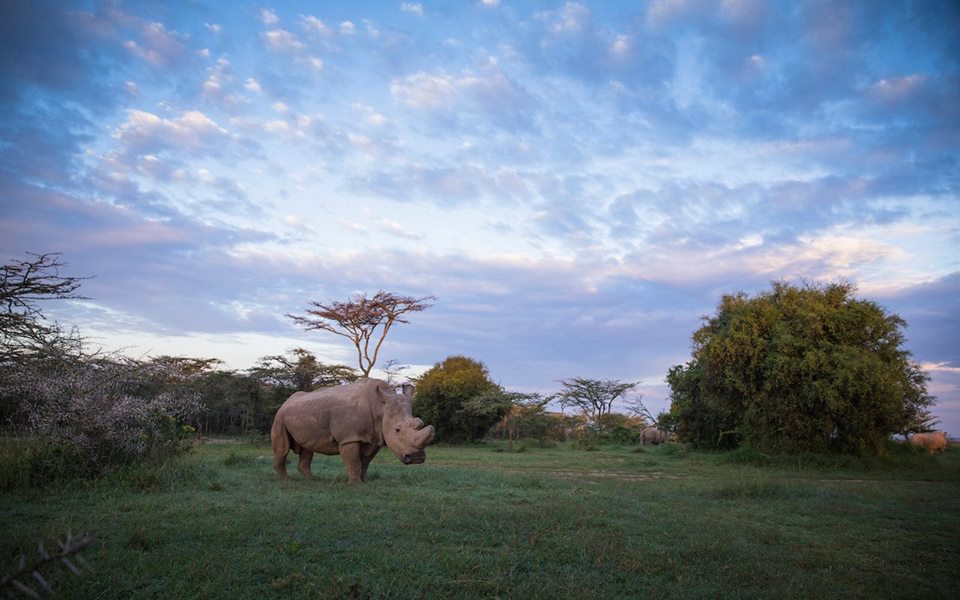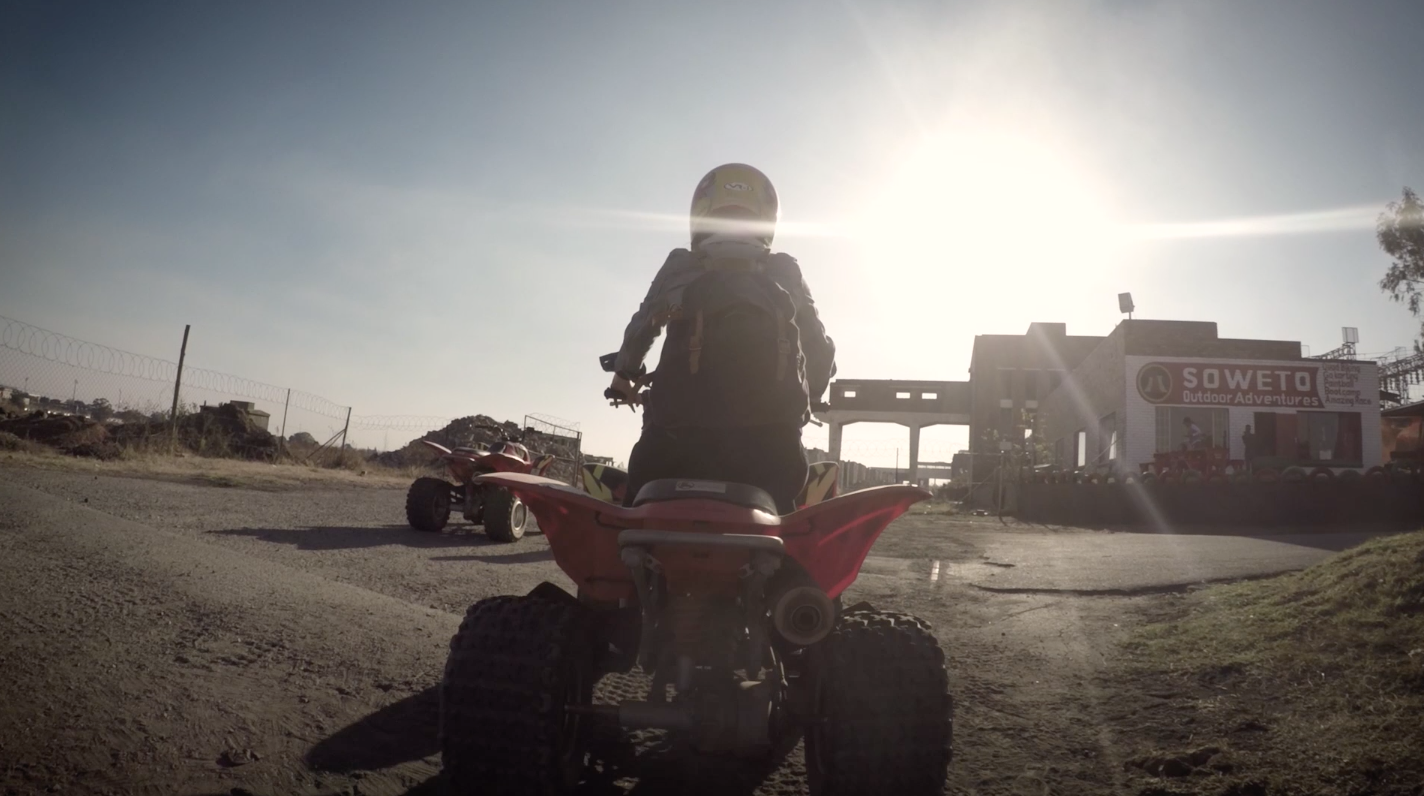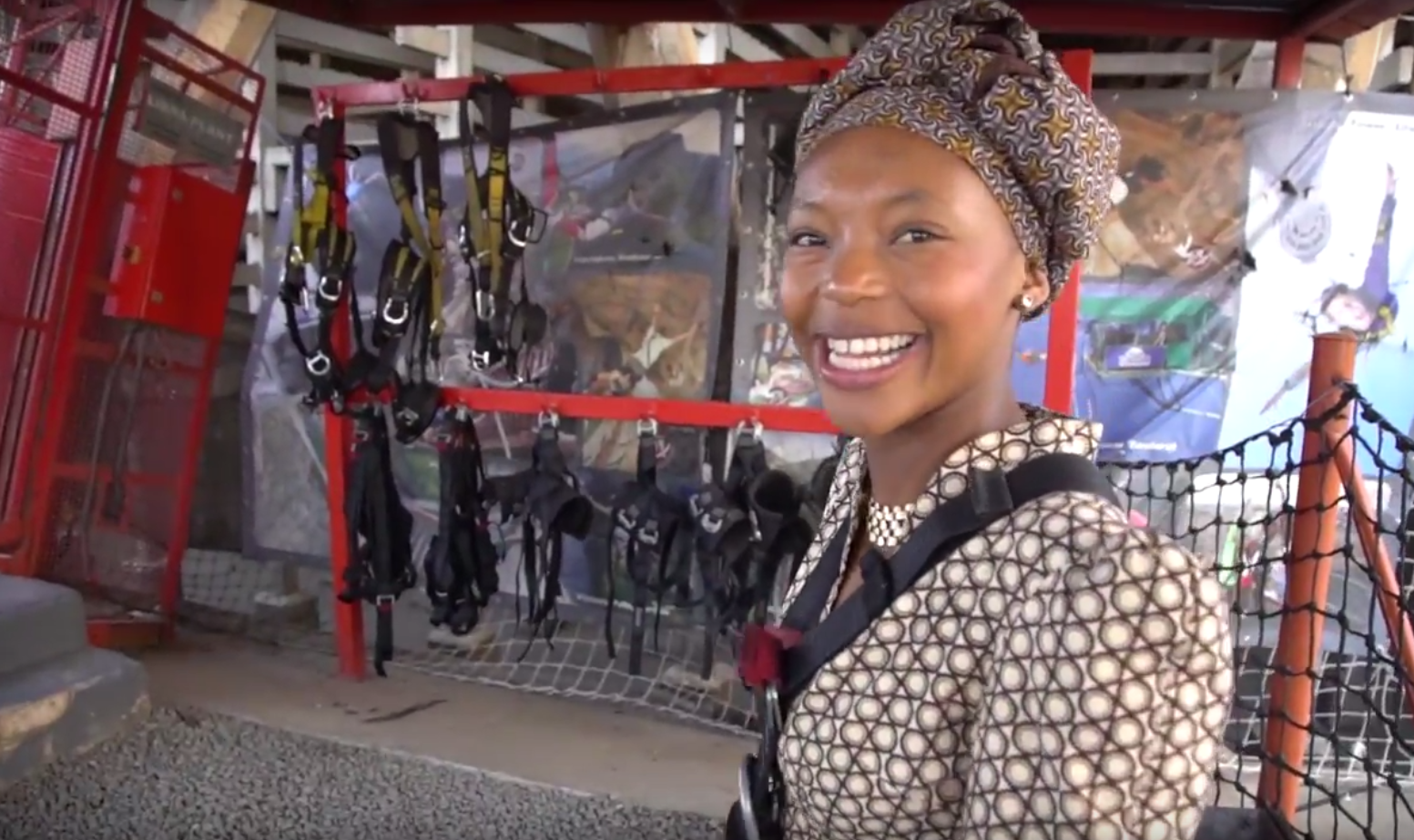In Ghana, You Can Be Buried In A Bottle Of Coke, A Crab, Or A Camera

Adam is a Sydney-based freelance writer whose contributed to GoNomad…
The tradition of Ghana’s intricate fantasy coffins stretches back to the ’50s. An old woman observed planes overhead from the recently finished Kotoka Airport, dreaming to one day fly on one. She passed before her wish could be fulfilled so her grandson, a carpenter, granted it posthumously – he shaped her coffin into a plane. This thoughtful act spawned a tradition for the Ga people of Teshie and a trade in “design” or “fantasy” coffins that exists to this day. While in Africa last year, Sydney writer ADAM BLACK spent a day with a renowned coffin maker, which culminated in a colourful funeral procession through the streets of Accra, the country’s capital.
The day is warming up inside this concrete courtyard in Accra. Women and children chatter outside as they hang out clothes and prepare a stew over hot coals. Wafts of garlic and chilli float through the air, as chickens dart about between the legs of the children. The joyous melodies of Ghanaian highlife music pipe from a tinny radio somewhere. Only one thing seems out of place – resting in the sun amid all this activity is an enormous heart-shaped box. The box is actually a coffin.

My beautiful dark twisted fantasy coffin
In a crumbling concrete tenement by the courtyard is a carpentry workshop called Hello Design Coffins – owned by Daniel Mensah Oblie – one of the Teshie district’s renowned coffin makers. Daniel is a master carpenter who creates “fantasy” coffins that capture the essence of a person and celebrates their life. Usually they indicate someone’s profession. His store front contains a bizarre menagerie of colourful coffins, all exquisitely carved and painted.

There is a crab for a fisherman, a camera for a photographer, and eight-foot-tall Coke and beer bottles for street vendors.

Daniel has invited me to his workshop today to attend a funeral featuring one of his coffins. His two apprentices have brought the heart-shaped coffin inside to work on it. It’s a painstaking process of trial and error. Small chunks of wood are roughly sawed, pressed in place to see if they fit, taken back, and planed down until they’re perfect. A fine layer of sawdust settles on the carpenters’ skin as the morning wears on.
Daniel’s six-year-old son and some friends run into the workshop and begin mimicking the carpenters – playing with saws longer than their own arms. They manage to nail a plank of wood to a worktable before a hammer-wielding apprentice chastises them, and they scurry away.

Funeral fashion
When it’s time to leave Daniel puts on gold jewellery and a red and black striped smock, his wife Latisha wears a white dress with traditional patterns in black. Fashion at Ghanaian funerals can indicate family lineage and clan affiliation. There are several other funerals going on in Teshie this Saturday, and you can tell the attendees of each by the clothes they wear. Some groups are dressed in robes of black and red worn toga-style, others have a dash of gold woven through the intricate traditional designs.
Daniel and Latisha lead me into the densely populated township by the coast. We weave our way through a labyrinth concrete maze of tin-roof houses past boys playing soccer in fields of dirt. The alleys are alive with people chatting, cooking, braiding hair, and bathing babies in buckets. Others have been cleared for funerals – large groups of people in matching dress congregate under the shade of a marquee with enormous speakers set up at one end blasting highlife music. The earth vibrates with bass and drums ricochet off the concrete.
Our funeral is in an alley sloping down towards the sea. A small patch of ocean glimmers between the tin roofs. There are about a hundred people dressed in white and blue dresses, headscarves and robes. A few teenage boys maintain their cool in black t-shirts and sunglasses.
Coffin for a boss
The deceased man was a ‘boss’ – a trotro driver. Trotros are privately owned and operated vans that act as the main mode of public transport in Ghana. The coffin Daniel has made for him is an impressively realistic replica of one, complete with seats, windows, side view mirrors, and a registration plate. All that’s missing are the dents and scratches from minor traffic incidents.

The deceased is still on display in a small room where people file past to make their last respects. In a dimly-lit back room about a dozen tribal elders in robes greet visitors and accept payments for the funeral, noting them down in a ledger. The rest of the funeral guests are seated in plastic chairs running down either side of the alley, tapping their feet to the pulsing rhythms of the upbeat highlife music that’s booming from the sound system at a distorted volume. These songs serve to remind people of happier times with the deceased – the sweet vocal melodies, shimmery guitars, and exuberant horn stabs sections create a jubilant atmosphere. During the eulogy the guests will sing dirges – slower, sombre songs about death. Dirges are often passed down through generations, the lyrics, like the fashion, indicating heritage.
The procession
Chaos erupts as the trotro coffin is carried to the deceased. A relative, seemingly overwhelmed with grief, attempts to stop it by force. He rushes at the pallbearers, wailing hysterically. Several men hold him back as the pallbearers struggle to squeeze the huge coffin through the narrow door space without dropping it. A side mirror snaps off during the yelling and confusion. It’s a strangely fitting scene for someone who spent so much of his life navigating a trotro through Accra’s notoriously difficult traffic.
The distressed man is still wailing once the coffin is inside, he breaks free of his captors and tears down a large archway made of black and white balloons around the entrance to the viewing room. The balloons pop loudly as he stamps them into the ground. Several funeral-goers pin him to the ground and pour sachets of water on his head until he is soaked and subdued.
Eventually the coffin is brought out and placed on display so the pastor can give his eulogy, and the family can sing their dirges. The music abruptly changes back to a thumping dance beat, and four men wrap fabric around the top of their heads to carry the coffin on top. The funeral procession snakes through the streets of Teshie. Everyone in town looks on and knows the deceased was a trotro driver.

The burial
The march ends at a desolate expanse of sand and shrubs by the sea. Only the occasional wooden cross indicates that it’s a cemetery. A smaller group of relatives continue through the rubbish-strewn sand dunes, past other families burying their loved ones. Eventually we reach a clearing, dig a hole in the sand, and the deceased, and his trotro, reach their final destination.
Later that afternoon we arrive back at Daniel’s shop. It’s been a long, hot day. I’m covered in dirt, and exhausted. But Daniel goes straight to his workshop, checking the progress his apprentices have made on the heart-shaped coffin. He is still in his funeral clothes as he begins testing pieces of wood, and suggesting improvements. A coffin maker’s work never stops.

(Lead image: Robert Kimberly/Flickr)
Qantas flies to South Africa, a gateway to the rest of the continent.
Adam is a Sydney-based freelance writer whose contributed to GoNomad and The Brag. He's travelled extensively through Asia and South America, and most recently spent ten months living in Africa, where he had a chameleon on his head for a short while. He misses being yelled at the in street now that he's back home.








